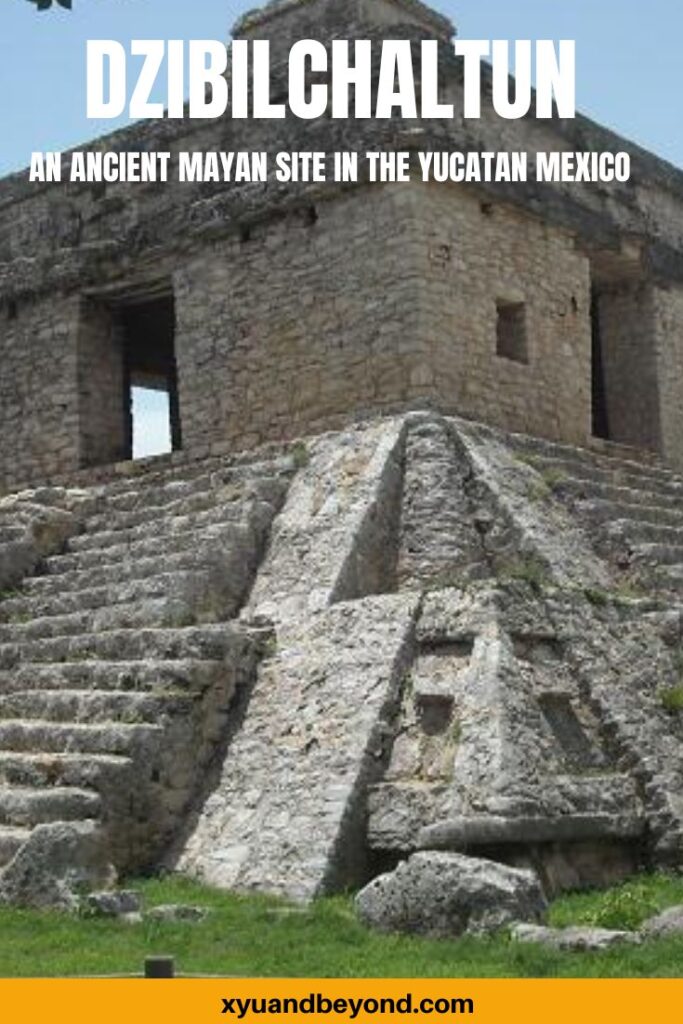Visiting Ancient Dzibilchaltun Merida
Dzibilchaltún (Ts’íibil Cháaltun) Dzibilchaltun pronunciation – (I borrowed that from Wikipedia), I still don’t know how to pronounce it properly. Translated from the Mayan Dzibilchaltún is the “place where there is writing on the stones”, this place has been continuously inhabited for thousands of years and is located only 22 miles from the gulf coast, 15 minutes from Merida.
The Dzibilchaltún ruins archaeological site is a Mayan site that contains a cenote where you can swim and Mayan ruins dating back thousands of years along with a fantastic museum.
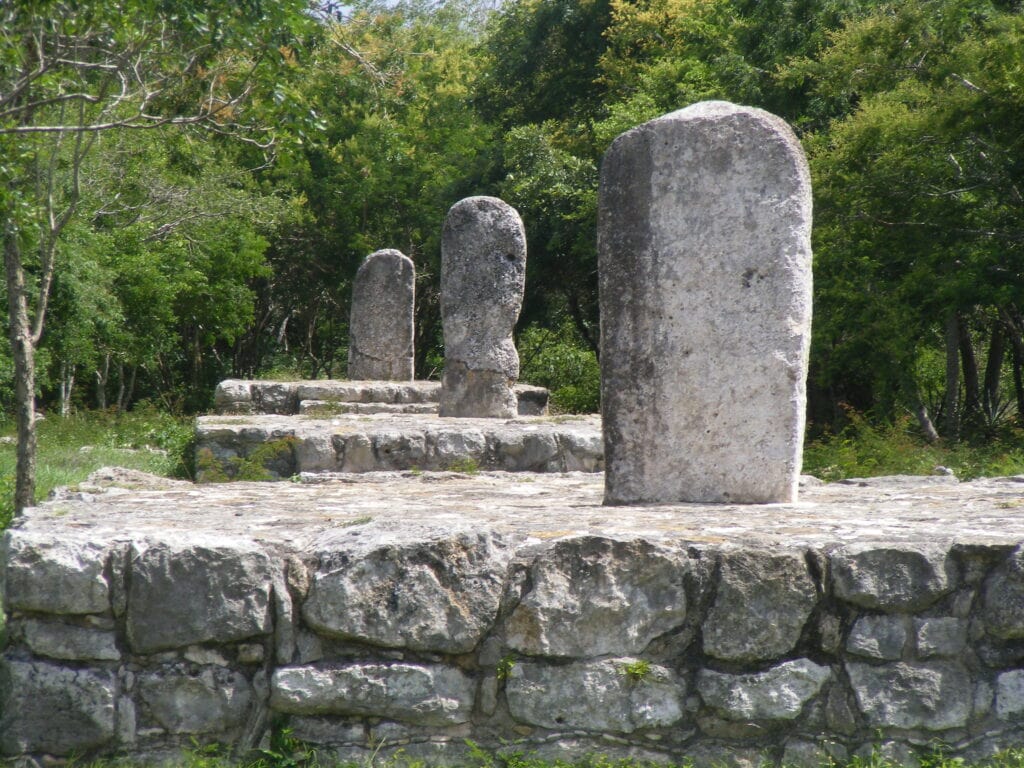
How do I get to the Dzibilchaltun ruins from Merida?
The easiest way to get to the Dzibilchaltun ruins from Merida is by taxi as the site is only 9 miles from the city. Or you can take a Combi van called a Collectivo which are located on Calle 69 near San Juan Park in the City and these go directly to the site. Dzibilchaltun is only 9 miles from Merida. Merida taxi drivers would be happy to take you to this site or you can hop on public transportation to the site. Combi vans (collectivos) can be found on Calle 69 between 62 and 64 in San Juan Park, Merida. These vans go directly to Dzibilchaltun.
Dzibilchaltún Yucatan Mexico: The ruins history
When was dzibilchaltun built? Dzibilchaltun is among the oldest sites on the Yucatan Peninsula dating back to as early as 500 B.C. and was still inhabited at the time of the Spanish Conquest making it one of the longest-term populated sites in the Maya World.
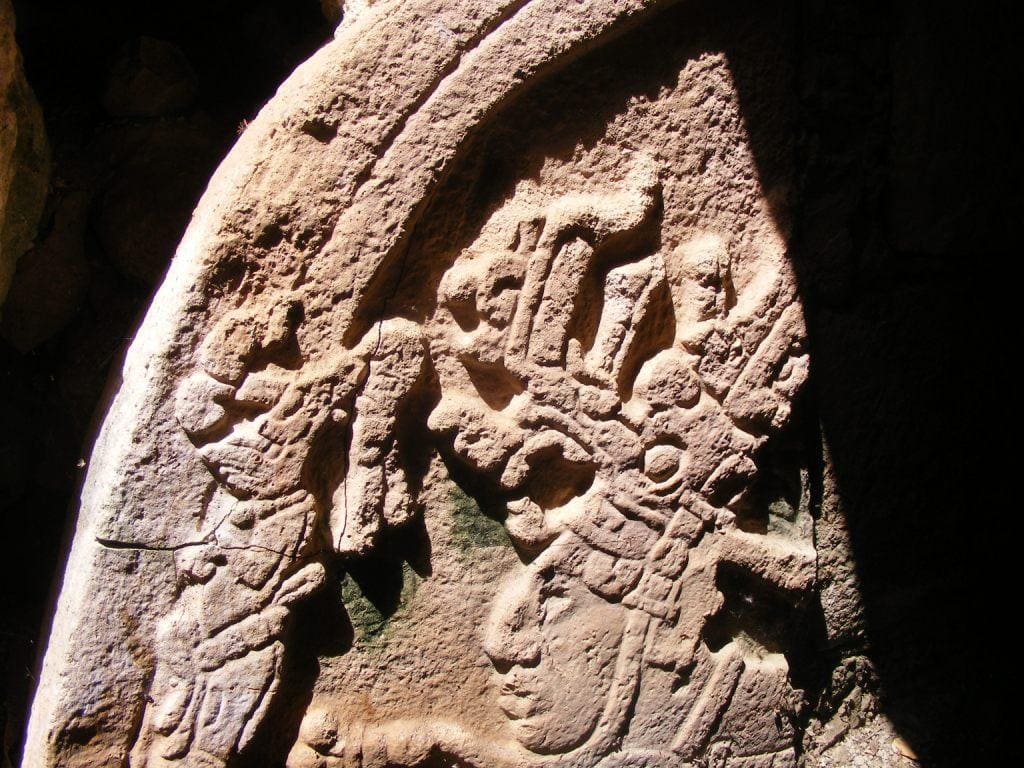
It is believed that the city was founded here due to the rich sea salt flats that are found along the nearby coast. Salt was a major Maya trade commodity, and the flats are still commercially worked today. Most of the buildings date from around 600-1150 A.D.

Archaeologists have studied nearly 35 sq km of the city, and the area that has been mapped includes over 8,000 structures, though most cannot be seen due to the growth of trees and vegetation. Dzibilchaltun history states that the city was once a wealthy port and centre of Mayan coastal trade and had a peak population of about 20,000, although it declined with the rise of Chichen Itza. Restoration still continues here.

The Dzibilchaltun entrance fee is around $12 US Entry includes access to the museum. There’s a small charge for parking of about $1.20 USD (15 pesos).
There is a really interesting museum on the site of Dzibilchaltún called the El Museo del Pueblo Maya. The museum has very close ties to the Mayan community who actively participate in celebrating the Day of the Dead (Hanal Pixan) and Christmas displays. At the museum you can see around 700 archaeological items including the burial of Kalom Úk’uw Chan Chaak who was the last governor of Chíy Chan Ti’Ho (the pre-hispanic name of Merida), you will also see the offering to the dead of the seven dolls.

Equinox at Dzibilchaltún
Dzibilchaltún is the stage for an archaeoastronomical event involving the alignment of the rising Sun with the eastern gateway of the Temple of the Seven Dolls. In 1982 Victor Segovia Pinto discovered that the sun is precisely framed by the gateway for a few minutes when seen from the west side of the temple.

Watching the equinox at Mayan ruins is a way of taking part in this rich history. Built centuries ago, parts of these ruins were purpose-built to track the stars. There are two main places in Yucatan to witness this unique event and they are Chichen Itza and Dzibilchaltún.
The equinox celebrations at Dzibilchaltún take place in March the day is dependent on the year. On this day, the first day of spring, the sun appears through the central window of the House of the Seven Dolls, the main building within this ancient complex.
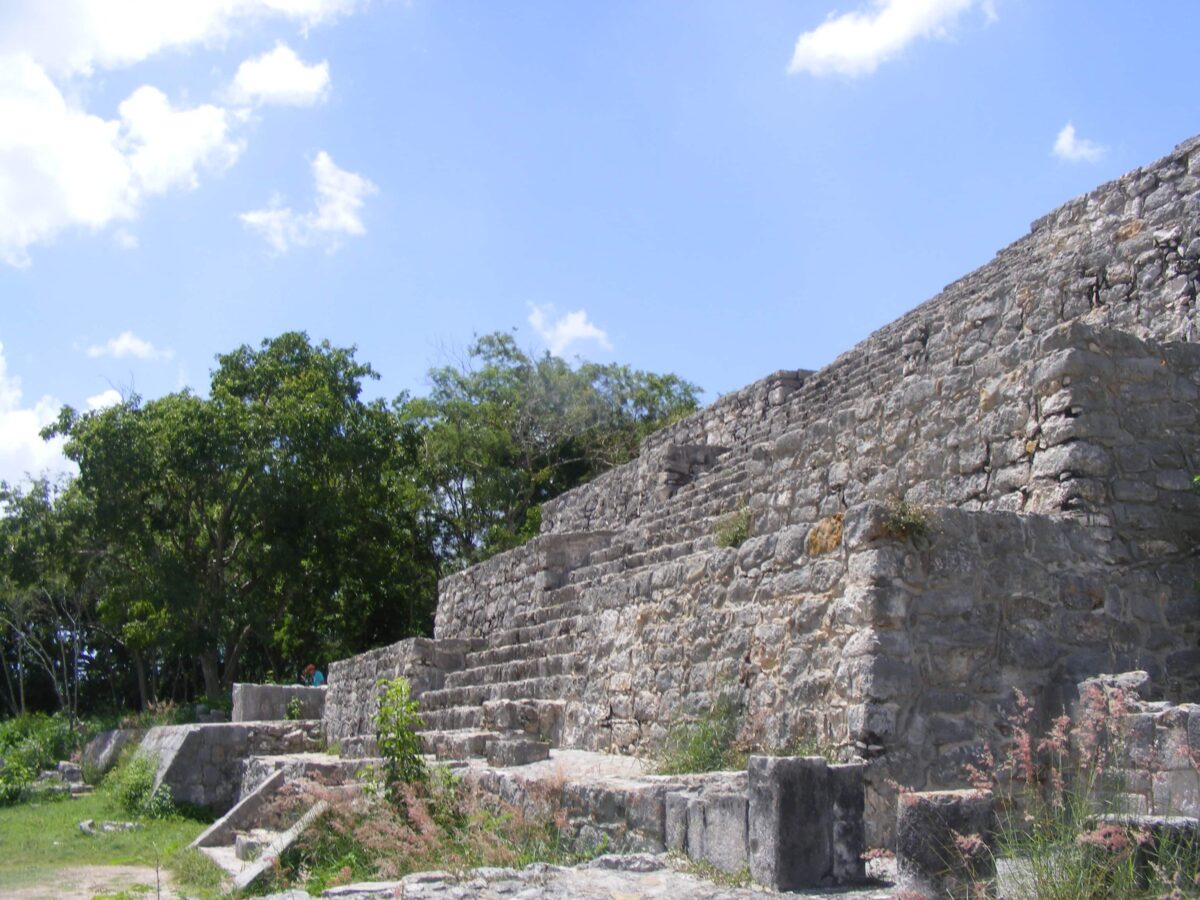
What to see at the Dzibilchaltún Ruins
Uxmal is another Mayan Heritage site that some say is better than Chichen Itza

Franciscan Chapel
Dzibilchaltun was once the centre of Mayan trade and a wealthy town with an estimated population of around 200,000. As Chichen Itza rose in wealth and power Dizbilchaltun lost much of its wealth and the people moved to the Caribbean side. Once the Spanish arrived on the shores of the gulf they continued to build Merida into a wealthy Spanish city and even built a Franciscan Chapel in the heart of these Mayan ruins.
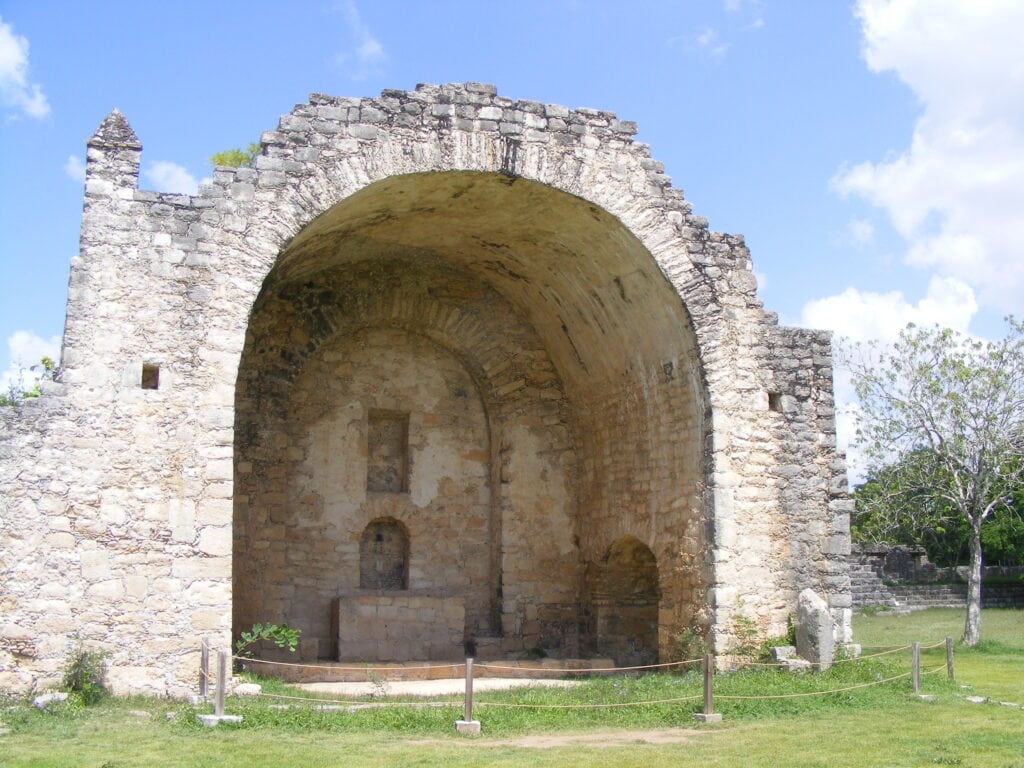
Restoration continues at Dzibilchaltunand around 8,000 structures have been identified but most are not excavated.
Temple of the Seven Dolls

The Temple of the Seven Dolls was named as a result of the discovery of seven pottery figurines in the central building.) The sun is framed in the doorway of the temple every year, on the 21st of March and 22nd of September – the spring and fall equinoxes.

Xlakah Cenote: Cenote Merida Dzibilchaltun
There is also a beautiful cenote at Dzibilchaltún called Xlakah which is open to the public and you can swim in while little tiny black fish nibble your feet. One end of the cenote is very shallow but the deep end runs over 140 feet down and continues onto a tunnel.
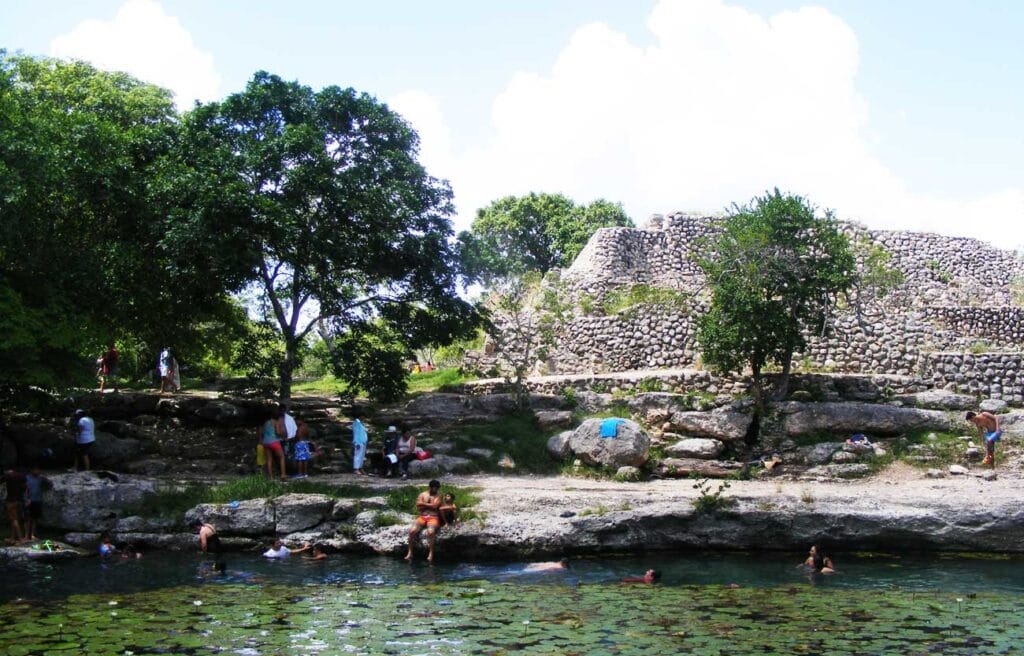
The Dzibilchaltún ruins are located between Merida and Progreso and tours are available from those two cities. A taxi ride costs about US$10, and the #3 bus from Merida will take you to the road that leads to the site.
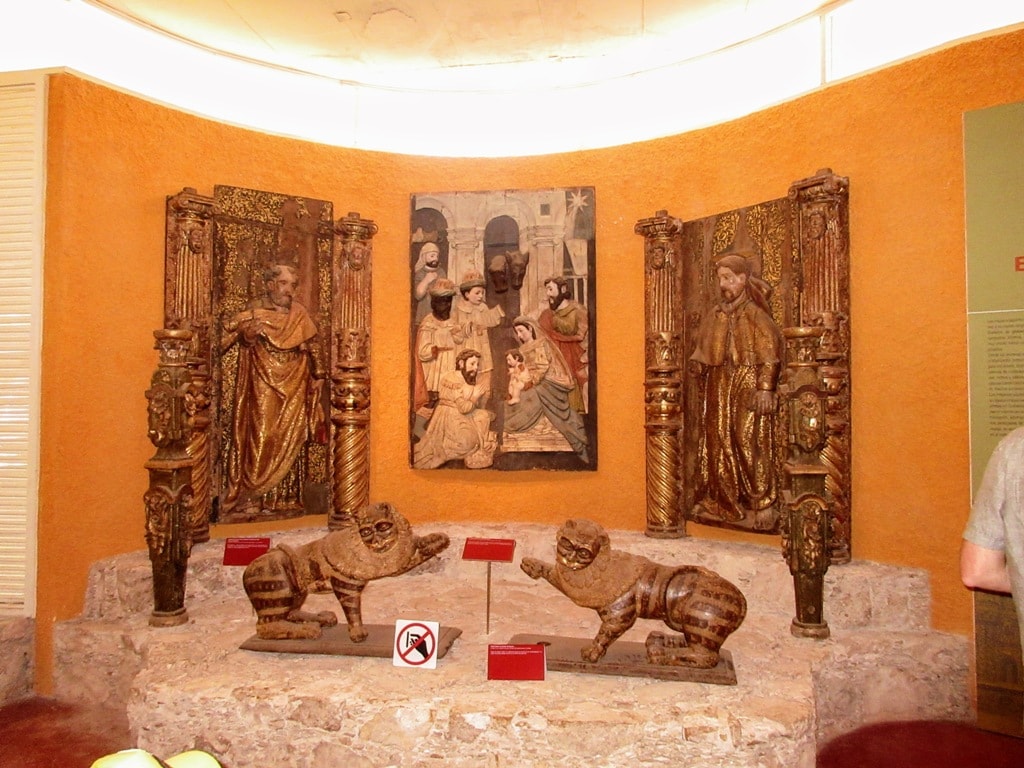
Take a look at the En-Yucatan site here for some fantastic tour opportunities in the Yucatan. Or go with my personal favourite and highly recommended Yucatan Cenote, Progreso Shore Excursions their website is fantastic and you can find it here or check out their Facebook Page here. They will create tours specifically designed for you. Ruth and Chris will create a trip just for you from:
– Private Adventures for (Couples/Family/Group)
– Scuba Tours (Cenote)
– Geocaching Adventures
– A couple, Group, and young Family Adventures
Dzibilchaltún is just one of many cenotes located in the Yucatan. Here are some more articles on the area and where you can find Mayan sites and more cenotes.
Moving to Mexico and living in Chelem
Top 6 things to do on the beautiful Yucatan Peninsula
Campeche a candy-coloured town to visit
pin it to save it
